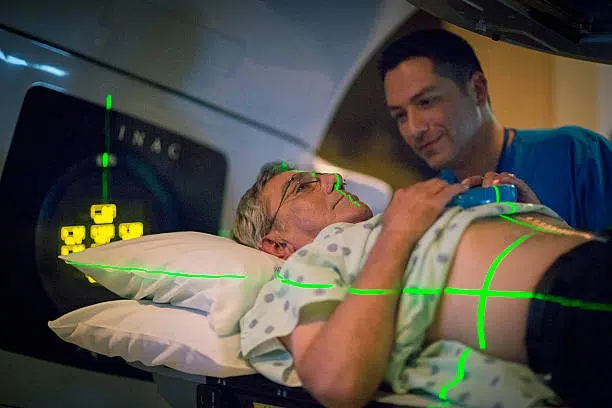 Chemo and radiation therapy are well-known and effective cancer treatments. Chemotherapy kills or slows the growth of tumors using drugs that can be given orally or through IV infusion. On the other hand, radiation treatment utilizes high-energy beams to destroy specific cancer cells.
When delivered together, they can eliminate tumors with greater efficacy. This method, called chemoradiation therapy (CRT), is often used to fight cancer more aggressively while preserving the patients’ quality of life.
Chemo and radiation therapy are well-known and effective cancer treatments. Chemotherapy kills or slows the growth of tumors using drugs that can be given orally or through IV infusion. On the other hand, radiation treatment utilizes high-energy beams to destroy specific cancer cells.
When delivered together, they can eliminate tumors with greater efficacy. This method, called chemoradiation therapy (CRT), is often used to fight cancer more aggressively while preserving the patients’ quality of life.
Understanding Chemoradiation
This synergistic approach works because the cytotoxic medications used in chemotherapy make tumors more sensitive to radiation exposure. The radiation particles target cancer cells in concentrated areas, while the drugs address those that have spread further from the primary location. With that enhancement, CRT offers more control over the initial tumor and prevents recurrence. Several studies have also proven that it can increase survival rates for several cancers compared to taking either treatment alone. Moreover, it may delay or eliminate the need for highly invasive procedures, such as partial or total organ removal. CRT can be administered sequentially, which is time-consuming due to the alternating cycles between chemo and radiation therapies. Conversely, it can also be done concurrently, wherein the procedure is condensed into several weeks only.When Is Chemoradiation Used?
Doctors may recommend CRT in various situations, but it’s commonly used for locally advanced cancers, indicating that the tumors have traveled beyond the original site but not to distant body parts. It’s also beneficial against tumors that are too complex to remove with surgery alone. Some of the cancers treated through CRT include:- Sarcoma
- Head and Neck Cancers
- Esophageal Cancer
- Non-Small-Cell Lung Cancer
- Bladder Cancer
- Rectal and Anal Cancers
- Gynecologic Cancers
Possible side Effects
When undergoing this treatment, patients may experience temporary and long-term side effects of both radiation and chemotherapy. These include:- Fatigue
- Mouth sores or difficulty swallowing
- Nausea and vomiting
- Skin irritation or burns


 Powered by
Powered by